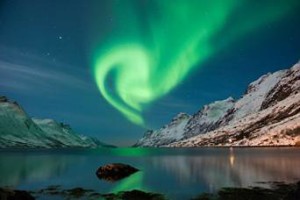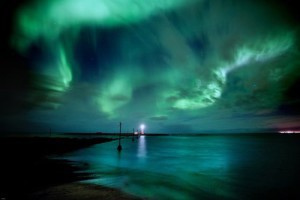 Most people have heard of the northern lights. Many have been able to see their beauty. Those who have never seen them, wish that they could. It is one of those natural phenomenon that never loses its significance. People from all over the world travel to places where the northern lights are most visible during peak times of the year. Have you ever wondered why some areas see it more often than others? What really goes on within our world when the Northern lights form? Below, you will find out what causes these lights to dance across our skies.
Most people have heard of the northern lights. Many have been able to see their beauty. Those who have never seen them, wish that they could. It is one of those natural phenomenon that never loses its significance. People from all over the world travel to places where the northern lights are most visible during peak times of the year. Have you ever wondered why some areas see it more often than others? What really goes on within our world when the Northern lights form? Below, you will find out what causes these lights to dance across our skies.
What Are the Northern Lights?
The scientific name for northern lights is Aurora Borealis. If you are looking at the lights near the southern portion of the Earth, you will be watching the Aurora Australis.
Typically, they are seen near the magnetic poles that are located in the far north or far south of the earth. They may appear to be any color, but most often they are light greens and pinks. Other colors include yellow, red, green, violet, and blue. Sometimes they may appear to be streamers of light that shoot up toward the sky, other times it may be seen in patches.
Understanding the Formation of Lights
Northern lights are what happens when two separate types of particles come together and collide. For it to happen and make lights, two things have to happen. The Earth’s atmosphere has to have gaseous particles in it and electrically charged particles from the sun must enter into the earth’s atmosphere. When these two particles meet, it sparks and you will get a light show.
The formation of charged particles from the sun is based on sunspot activity. This happens because the sun’s surface is millions of degrees Celsius and its gas molecule frequently collide and explode. These explosions cast out electrons and protons. Some escape through holes that are in the sun’s magnetic field. They are then picked up and carried by the solar wind.
The earth is mostly protected by its own magnetic field. However, the magnetic fields are weaker toward the north and south poles. Some of the protons and electrons from the sun’s explosion can enter into our atmosphere easier where our magnetic field is weakest and the light show will begin.
The Beauty of Explosions
The variation in color is based on the type of gas that charged particles come into contact with. The most common gas sparked light show happens about 60 miles above the earth. This is why most of the northern lights show as a pale yellow green color. If you see an all red aurora, which is very rare, it is because the collision happens at closer to 200 or more miles above the earth. Other colors happen at other heights in between.

If you want to witness the beauty for yourself, you can see the northern lights a lot easier than you will see the southern lights. In the United States, they have been seen as far south as New Orleans, but you will have an easier time finding them if you go further north. One place that seems to have the most activity in the US is the northwestern parts of Canada and Alaska. Greenland, Iceland, Norway, and the coastal waters of Siberia are also places that report seeing them often. The southern lights are harder to find because most of them stay concentrated in a ring that engulfs the southern Indian Ocean and Antarctica.
You are also going to have an easier time viewing if you pay attention to when auroras typically occur. As with all astrological things, there are peak times to watch. You stand a better chance of seeing auroras during the winter months and if you do not mind waiting a little longer, every 11 years there is an even larger peak in viewing them. The last peak year was 2013.